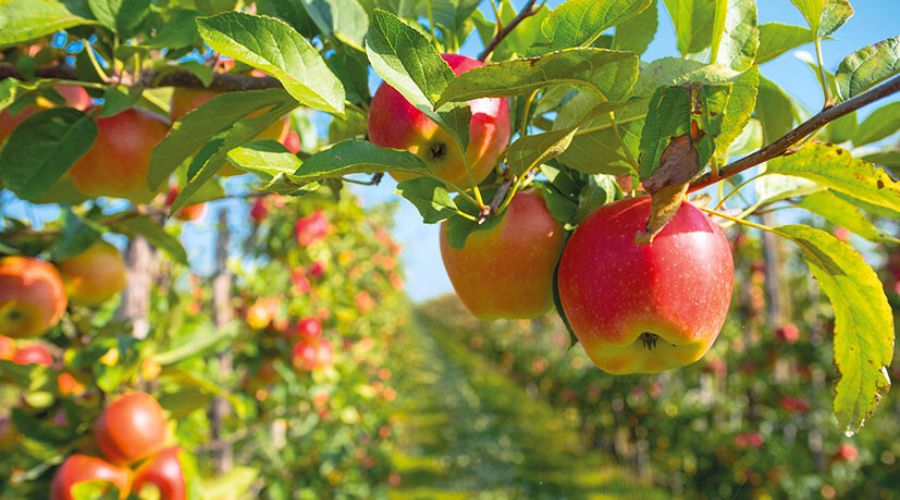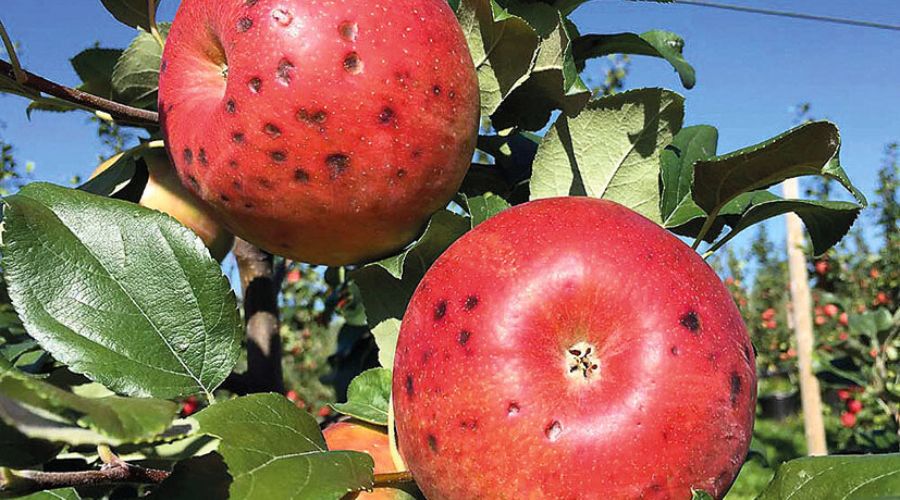Biostimulants for fruit quality & shelf life
8th June 2024
The beneficial effects of using biostimulants on crops has been known for many years. Hortifeeds agronomist, Mike Wainwright, explains more about their effects on plant growth, development and subsequent shelf life.

Farmers growing crops near the sea discovered the powerful effects of applying seaweed centuries ago without ever understanding how or why they worked. It’s only in the last few decades that the multiple active components in seaweed have been fully isolated and described as biostimulants, and their individual effects on plant growth and development examined in increasing depth.
Firstly, it’s important to understand what a biostimulant is. The European Biostimulants Industry Council (EBIC) defines plant biostimulants as materials that contain substance(s) and/or micro-organisms whose function, when applied to plants or the rhizosphere, is to stimulate natural processes.
These processes either enhance or benefit a crop’s ability to uptake and utilise nutrients efficiently, tolerate abiotic stresses and improve crop quality. These benefits are entirely independent of the nutrient content.
As the impact of farming practices on the wider environment has become increasingly understood, and the necessity for more sustainable approaches to production is recognised, the importance of biostimulants has increased greatly. They act as valuable tools to improve crop quality whilst keeping other expensive inputs including pesticide and fertiliser applications to a minimum.
Systemic input
The widespread adoption of seaweeds as a systematic input in agriculture and horticultural production has developed over the last quarter century as the benefits of their use have become better understood.
Seaweed products, such as the highly concentrated HortiKelp from Hortifeeds, are effectively a cocktail of biostimulants, which marine algae such as kelp (Ascophyllum nodosum) have concentrated in their cells to help overcome the stresses of their harsh maritime and coastal environments.
Ascophyllum nodosum is widely regarded as the best source of seaweed extracts because of the profile of auxins, cytokinin, alginates, mannitol, brassinosteroids (to name just a few) bioactive constituents it contains.
The role of phosphites as biostimulants continues to be widely debated, both in this country and across the European Union. In the EU phosphites are subject to strict Plant Protection Product Regulations, which means they are subject to the same regulatory requirements as synthetic pesticide chemistry, which is often much more harmful, both to human health and the environment.
Currently use of phosphites, such as the industry standard HortiPhyte product, is permitted in the UK. Many years of research at the University of Nottingham’s Sutton Bonington campus, has shown how effective phosphites are as biostimulants to encourage root and shoot development and promote crop resilience, and this is recognised by growers throughout the wider industry.

Fruit cell structure
Calcium is well understood as a vital component in the formation of fruit cell structure. Calcium pectate forms the ‘glue’ that binds cell walls together, strengthening tissues, and providing resilience and a barrier against disease attack and the natural processes of decay.
Calcium is unlike most other plant nutrients in being transported within plants in the xylem vessels via the transpiration flow, largely towards leaves. The developing fruits are a much smaller sink for calcium transported in this way when compared to leaves.
This can cause localised calcium to be at sub-optimal and even deficient levels in fruit, leading to significant reductions in fruit quality and shelf life.
Clearly, optimising cell calcium content is vital in ensuring quality and resilience is optimised. The foliar product Amētros from Plant Impact contains patented CaT Technology, which helps to mobilise calcium and increase its concentration in the cells where it is needed most, particularly in the fruit.
CaT Technology stimulates selective ion transport channels in cell membranes, increasing calcium concentration within the cells, and allowing an increased level of calcium to move into fruit cells. This is known as the symplastic pathway, enabling levels of calcium to be increased and providing significant improvements in fruit quality and shelf life.
In a trial at NIAB EMR during the 2023 season, a 6.4% increase in yield was seen following applications (at 2-litres/ha) of CaT Technology (as contained in Amētros). This also led to an 8.3% increase in overall crop vigour, thus improving potential yield in subsequent seasons.
In trials at a leading fruit growers co-operative, Amētros was shown to increase the shelf life of strawberries by an average of one day, giving significantly quality and customer experience. In trials at Poznan University in Poland, the use of CaT Technology in Amētros at 1-litre/ha significantly reduced fruit wastage both at harvest and after cold storage, demonstrating the same benefits as seen in other trials.
While each of the multiple biostimulant components on the market have their own specific uses and benefits, the impracticality of applying many differing products at various growth stages throughout the growing season is enough to bamboozle even the most technical of growers. To cover as many bases as possible with one single spray application, Hortifeeds has developed HortiBoost, which contains concentrated seaweeds, humic and fulvic acids, as well as amino acids to aid all round growth and resilience throughout the growing cycle.
This is working very effectively on a number of orchards and fruit farms when tank mixed in combination with routine pesticide applications. Low rates of HortiBoost used frequently in this way as a ‘pill sweetener’ ensure its multiple biostimulant properties are available for crop benefit at the time they are needed, regardless of whatever weather extremes occur, and without needing additional spray applications.
Read more fruit news.
